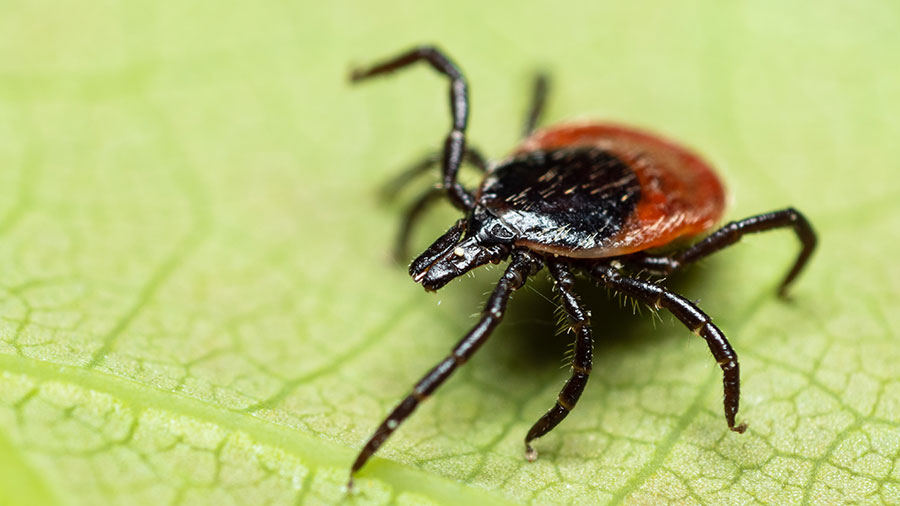Farmers sought for tick-borne livestock disease risk research
 © AdobeStock/BJFF
© AdobeStock/BJFF Cattle, sheep and dairy farmers concerned about the rising risk of tick-borne diseases in their livestock are being invited to take part in a three-year research project.
The aim of Optick is to understand how to improve surveillance and management of tick-borne disease threats in the UK’s changing environment. It is funded by UK Research and Innovation and Defra.
See also: Redwater fever in cattle: What it is and how to manage it
Climate change, land-use changes (such as more woodland), and a growing density of deer and livestock hosts are driving the increased threat, says Dr Beth Purse of the UK Centre for Ecology and Hydrology.
Beth is the co-principal investigator of the project. She says: “We need to understand how woodland expansion for biodiversity, through Environmental Land Management schemes, is going to trade off with tick-borne disease risks.”
Growing risk
Optick focuses on the impact of four diseases, all transmitted by the same vector, Ixodes ricinus.
This tick has traditionally been associated with forests, but it can build up to high densities in grassland and moorland, posing a risk to sheep and cattle grazing in these areas, as well to farmers and the public.
These diseases are:
- Bovine babesiosis (red water) in cattle, caused by Babesia divergens
- Louping ill, a febrile illness in sheep, cattle and grouse (can cause encephalitis/severe mortality), caused by louping ill virus
- Tick-borne fever and tick pyaemia in sheep and cattle, caused by Anaplasma phagocytophilum.
“Globally, there is an increase in tick-borne disease burdens, and we can see new tick risk areas emerging, causing unpredictable disease incidents like herd breakdowns,” says Beth.
“These diseases rank high among farmer priorities, according to Ruminant Health & Welfare.
“Although not particularly widespread, they can have severe long-term impacts on production in tick-dense areas,” she adds.
Knowledge gaps
The project is designed to address key gaps in knowledge that hamper disease management. These include:
- How changes in land use and climate will affect ticks, wildlife and livestock populations, altering patterns in tick-borne disease risk
- How land use and livestock management practices might interact to increase risk in some areas to tick-borne diseases
- Which farm interventions and land, agricultural and biodiversity policies will minimise risks from tick-borne diseases.
By involving all sectors at each stage of the project, researchers aim to “develop the best evidence base for policy and farm management”.
The study will also produce surveillance tools, risk guidance and modelling frameworks to help farmers be more prepared in tackling these diseases.
How to get involved
Farmers and vets are invited to take part in interviews and surveys covering farmer perceptions and priorities about ticks, tick-borne diseases, disease control strategies and impacts.
These, and a series of annual workshops, will begin in December/January.
In addition, in North Wales, and Devon and Cornwall – previous hotspots for tick-borne diseases in livestock with high densities of all the key hosts – researchers are seeking 40 farms where they can carry out ecological surveys and blood-sample livestock for pathogens.
Findings will be integrated with landscape analysis and transmission modelling.
To find out how to take part, go to optick.ceh.ac.uk or email info_optick@ceh.ac.uk
Optick is a partnership between the UK Centre for Ecology and Hydrology, University of Liverpool, Moredun, the Animal and Plant Health Agency and UK Health Security Agency.
